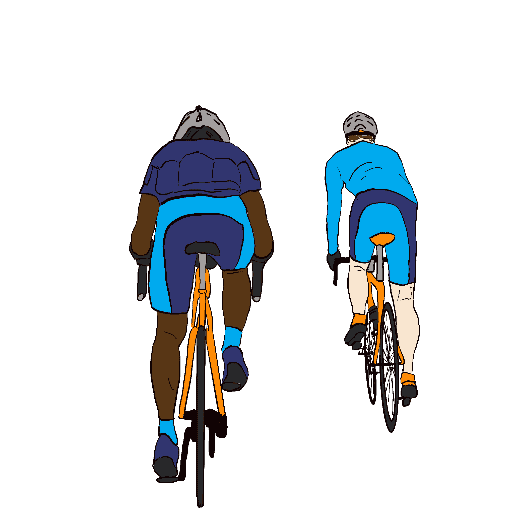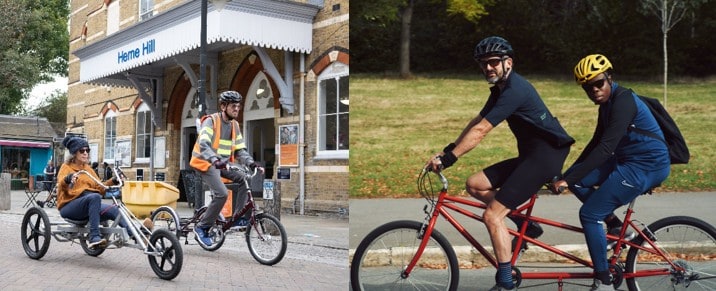Download this sheet as a Word document
What is mobility justice
Mobility justice is the practice of targeting resources to create or improve journey-making options for those who currently have the least access to transport and mobility.
Mobility justice redresses existing inequalities by prioritizing those who are currently excluded.
Mobility justice and disability equity are Wheels for Wellbeing’s core campaigning principles.
Mobility justice aligns with the Equality Act, including the Public Sector Equality Duty, and the United Nations Convention on the Rights of Persons with Disabilities (UNCRPD).

Mobility justice in public space, active travel, transport and environmental schemes
Decision-makers and campaigners should use a mobility justice perspective to ensure public space, transport, active travel and environmental schemes are fair.
At present, schemes are too often designed to benefit people who already have the most mobility options, and to exclude people who have few or no mobility options at all.
Environmental considerations, antisocial behaviour, heritage and cost are frequently used to justify inaccessibility and mobility injustice – but mobility justice in scheme design is possible for all scheme types, from physical routes and storage to training schemes.
Cycle provision scheme designed without considering mobility justice
An organisation wants to encourage cycling. They offer to pay 40% of the cost of any cycle up to a maximum cycle cost of £5000. They are pleased by how popular their scheme is.
This scheme is similar to many real cycle funding schemes. It is poor practice because the scheme is designed in a way that will disproportionately benefit people who are already relatively wealthy, already cycle, and who do not need high-cost cycles:
- Many Disabled people need specialist or adapted cycles which will cost more than £5000 – they are excluded from the scheme by design.
- People with very little money or who need more expensive cycles will be unable to afford the 60% cost, so they will also be excluded from the scheme.
- People who do not already cycle are unlikely to risk spending significant amounts of money on a cycle they may not find useful, unless they are very well-off. Many cycles bought through this scheme are likely to be a wealthy person’s second or third bike…

Cycle provision scheme designed using mobility justice principles
An organisation wants to encourage cycling.
They pay a cycling provider to bring a range of cycle types for free supported “come and try” lunchtime and evening sessions on wide, traffic-free tarmac paths in a local park.
They also arrange free longer-term cycle loans and route buddy help for people who want to see if cycling journeys from home will work for them.
If scheme users want to cycle longer-term but can’t afford to buy a suitable cycle, the organisation use remaining funding to provide grants to reduce the cost of a suitable cycle to a manageable price for the individual.

- People who are the least likely to already cycle, including Disabled people, are enabled to try out cycling both in a protected spaces and on routes useful to them.
- People who are the least able to afford to purchase their own cycle are supported to become cycle owners in a fair, equitable way.
Conclusion
The scheme designed to improve mobility justice is likely to provide fewer cycles – but the cycles it does provide are likely to go to people who otherwise would have been unable to start cycling or return to cycling. More people are likely to get a chance to try cycling and start to think about if it could work for them using the mobility justice scheme.
The scheme designed to improve mobility justice also has a good chance of enabling more people to start cycling than the scheme targeted at wealthy, non-disabled people.
To achieve mobility justice, schemes’ successes need to be judged on who uses the scheme, not just on raw numbers.
Wheels for Wellbeing Language Matters
The Wheels for Wellbeing Language Matters series provides information and guidance on terms that are important for equitable active travel. We need campaigners, decision-makers and designers to understand these ideas so we can develop the policies and infrastructure that will result in equal mobility for all. .
